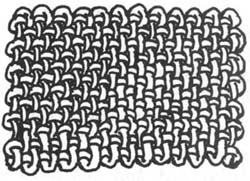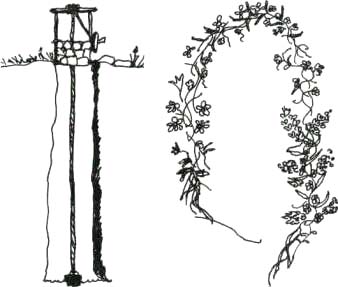|
Flower Adornment Sutra Prologue by T’ang Dynasty
National Prologue: THE ANCIENT VIRTUOUS ONES, SEEING THAT THE FOLLOWERS OF CONFUCIUS AND MICIUS BOTH CALLED THEIR WORKS "TEXTS," ADOPTED IT AMP ELABORATED WITH THE TERM "MAT" TO DESIGNATE THE SAGELY TEACHING. WITH THE INCLUSION OF BOTH MEANINGS, THEY ACCORDED WITH THE PRACTICE OF BOTH REGIONS. THE ADOPTED MEANING ENRICHED THE TERM. THEY FURTHER ADDED THE WORD "TALLYING" TO DISTINGUISH IT FROM THE WORD "MAT", WHICH WAS VERY FITTING. COMMENTARY: THE ANCIENT VIRTUOUS ONES were people in the past with virtue in the Way. It's not necessarily referring to specific individuals, but saying rather that all those ancients with virtue, SEEING in this way THAT THE FOLLOWERS OF CONFUCIUS AND MICIUS BOTH CALLED THEIR WORKS "TEXTS". Confucianism's teaching host was Confucius (family name K'ung, given name Yu, and personal name Chung Ni). Micius (Mi Tsai) maintained a teaching of universal love, which was truly vast. Yet Mencius criticized him for being a beast, not a person. If he had only talked and hadn't actually put his teaching into practice, Mencius would have scolded him even more. The way it went was that, prior to the time of Mencius, there were Yang Tse (Yang Chu) and Micius (Mi Tsai). Yang Tse had a philosophy of every man for himself, only looking out for number one, which was the epitome of selfishness. Micius was the opposite, totally altruistic and public-spirited. Yet his altruism was excessive to the extreme. Yang Tse didn't go far enough, and Micius went too far, so neither was in harmony with the Middle Way. What was Yang Tse's every man for himself philosophy like? He said: If by plucking out a single hair from my body I could benefit the world, I would not do it. He would not have pulled one hair from his body even if it would have benefited all humankind and made things right with them. His attitude was, "I wouldn't pull out one of my hairs to help you." See how selfish that was. Just one hair from his body—it's not talking about more than that. There would be even less question of his giving away more than that. But he wouldn't pull out one hair to help all human beings. That's the kind of person he was. Micius was another story, and protested against that attitude saying:
If by plucking out a single hair from
your body you could benefit the world, you Provided it would help the world, I would let myself be killed. Would you say that was actual practice or not? That is truly love for all the citizens of the world. "If it would only help all of you, I would do it. I would not mind losing my life for that." He was that admirable, and yet Mencius said of them: The egoism of Yang Tse means he has no lord. The universal love of Micius means he has no father. One who has no lord and no father is a beast. Mencius said that for Yang Tse there was no Lord, no Emperor, since he was so selfish he would not help the Emperor. He said that in Micius' universal love, he loved anyone, whether it was or was not his father or mother. His universal love is what Protestants today profess. His love was so universal that for him no one was his father, because he did not distinguish between those related to him and unrelated to him. He would do anything for anybody. No one was more distant or close to him, more related or less related to him. Confucianism advocated that love should start at home, with loving your father, mother, sisters and brothers, and then: Filiality to one's own elders carries over to the elders of others. Care for one's own youngsters carries over to the youngsters of others. But he wasn't that way. Whether close, distant, you, me, others—he loved them all. That was his concept of universal love, which got really messy. So Mencius said it meant he had no father, and that people who recognized neither lord nor father were beasts, simply animals. Micius, however, was able to put his creed of universal love into practice, and so people believed in him at the time. Yet Mencius—who didn't enjoy scolding people—scolded him. When he saw those kinds of sidetracked, off-center teachings confusing people and getting away with it, he just had to criticize them. Micius actually did have a lot of talent. He was able to make wooden gliders, flying machines, which could fly several hundred miles through the air—and that was many centuries ago. You say, "We've never seen that recorded in history. That's the way they did things in China. They didn't write all of that down in books or keep records, so no one believes it. Yet if it had been released, people would have been able to make airplanes and gliders in those early days. China had gunpower in the Chou Dynasty. It knew how to manufacture it, but did not develop it. The Chinese didn't want to develop lethal weapons and said, "This stuff is really no good. Let's not invent any more of it." So, "the followers of Confucius
and Micius both called their works 'texts'." In Confucianism there is the
Book of Odes, the Book of History, the Book of Changes, the Book of, Rites, and
the Spring and Autumn Annals--the Five Classics or "Texts". (Note:
The words "Book" or "Classic" in referring to these works
is the character ching |

